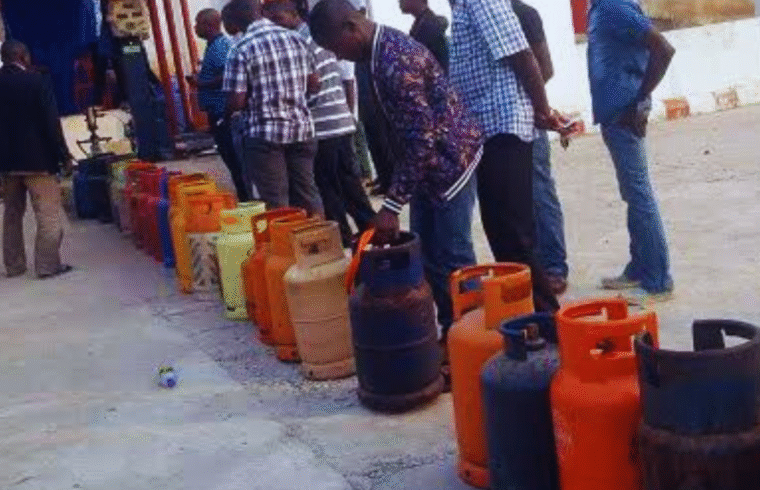The cost of Liquefied Petroleum Gas (LPG), commonly known as cooking gas, has remained significantly high across major Nigerian cities, despite recent assurances from industry marketers that prices would fall back to the pre-October average of ₦950–₦1,000 per kilogram.
A market survey by Vanguard shows that LPG is still selling between ₦1,200 and ₦1,400 per kilogram in several Lagos outlets.
On Sunday, outlets such as Gasland in Igando, Ikotun, and Mac Rich Gas Plant in Cele–Okota sold cooking gas at ₦1,200 per kilogram. Meanwhile, other gas plants across the city charged between ₦1,300 and ₦1,400, depending on location.
A gas retailer, who requested anonymity, confirmed the steady price increase, stating:
“Last month, we sold for ₦900 to ₦950 per kg. Now we retail at ₦1,200. This is the reality we are facing in the country. We hope prices come down in the coming weeks.”
Findings also revealed that bulk buyers purchasing between 150kg and 200kg currently pay around ₦1,104 per kilogram, signaling ongoing supply and distribution constraints within the market.
Marketers Cite Logistics Challenges and Supply Backlogs for High Prices
In a phone interview, the outgoing President of the Nigerian Association of Liquefied Petroleum Gas Marketers (NALPGAM), Mr. Olatunbosun Oladapo, explained that lingering supply backlogs, refinery maintenance activities, and logistics issues are responsible for the continued high cost of cooking gas.
“There is a backlog of unsupplied products, coupled with maintenance and refinery logistics. However, we are confident that normalcy will return in the coming weeks,” he stated.
Oladapo expressed optimism that prices will ease once gas from Seplat Energy begins to enter the domestic market, alongside increased output from the Dangote Refinery and other gas infrastructure projects currently underway.
He noted that the combination of new supply sources — including Seplat Energy and Dangote — and ongoing investments in gas infrastructure will help resolve supply challenges and gradually drive down prices across the country.
“The entry of Seplat Energy gas into the market, along with improved supply from Dangote and other producers, will stabilise the market and ease the pressure,” he added.
Cooking Gas Consumption Doubles in Four Years
Speaking at the association’s 38th Annual General Meeting (AGM), Oladapo highlighted a remarkable surge in national LPG consumption — rising from 900,000 metric tonnes in 2021 to 2 million metric tonnes in 2025.
“About four years ago, national consumption of LPG was between 900,000 and 1 million metric tonnes. Today, it has risen to 2 million metric tonnes. By the first quarter of next year, LPG consumption will hit 3 million metric tonnes per annum,” he disclosed.
He attributed the growth to increased private sector investment, strategic collaboration with government agencies, and rising public adoption of gas as a preferred energy source.
Oladapo also reaffirmed NALPGAM’s commitment to supporting the Federal Government’s Decade of Gas initiative, which aims to expand gas utilisation and position Nigeria as a leading gas-driven economy.
“Through our collaboration with the Federal Government under the Decade of Gas initiative, we have been able to deepen the future of LPG in Nigeria,” he noted.












